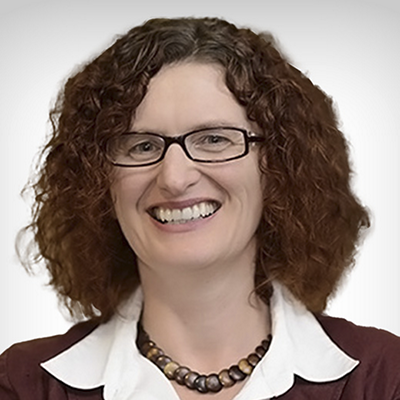Cloud native EDA tools & pre-optimized hardware platforms
Definition
Medical image segmentation involves the extraction of regions of interest (ROIs) from 3D image data, such as from Magnetic Resonance Imaging (MRI) or Computed Tomography (CT) scans. The main goal of segmenting this data is to identify areas of the anatomy required for a particular study, for example, to simulate physical properties or virtually positioning CAD-designed implants within a patient. Medical image segmentation can be a time-consuming task, and recent advances in Artificial Intelligence (AI) software techniques are making it easier for routine tasks to be completed.
What are the Benefits of Medical Image Segmentation?
One of the key benefits of medical image segmentation is that it allows for a more precise analysis of anatomical data by isolating only necessary areas. For certain procedures, such as implant design, it is necessary to segment out certain structures, for example in the hip or knee. In addition, segmentation offers the benefit of removing any unwanted details from a scan, such as air, as well as allowing different tissues such as bone and soft tissues to be isolated. When combined with different software processing options, researchers and clinicians can generate a series of segmented masks that are ready for further analysis.
How Does Medical Image Segmentation Work?
When working with CT, MRI, and other types of scans, segmentation generally works by taking information from the background image data and using it to generate a mask. Depending on the task, users may work on their scans in 2D or 3D. There are many different tools and algorithms available in segmentation software, for example fully manual options to paint on the data, or semi-automated operations such as thresholding and region growing. Applications are also available for cardiovascular image segmentation, with particular options for working with different heart cases.
For many cases using medical data, it may only be necessary to use a few segmentation tools. As previously noted, studying the placement of medical devices can involve a few steps to segment regions of interest in a bone, which can often be automated using scripts or AI techniques. However, for certain projects, especially those that deal with unusual pathologies or complex traumas, more time and a wider range of software features may be needed to create the required segmentation result.
To this end, in software like 六合彩直播开奖 Simpleware, some of the image segmentation tools available to users include:
- Paint/unpaint
- Threshold
- Flood fill
- Interpolation
- Split regions
- Boolean operations
Where and When Does Medical Image Segmentation Fit in the Product Portfolio?
Simpleware software is widely used to work with medical images, both for clinical applications and general research involving scan data. Accurate and fast segmentation is crucial to many applications and is also one of the key functions associated with Simpleware FDA 510(k) and CE-marking certifications. More recently, AI-based Machine Learning modules have been added to Simpleware software to speed up the segmentation of orthopedic and cardiovascular data.
In this context, common and time-consuming steps for extracting regions of interest can be completed with a click of a button, rather than relying on significant manual work. With this approach, based on medical training datasets and verified by clinicians, users can work faster and overcome typical workflow bottlenecks. This helps speed up the process of going from image import through to models ready for analysis, design work, and simulation.
Going Beyond Medical Image Segmentation
Segmentation of medical images is a core feature of Simpleware ScanIP, but is often just the first stage to completing workflows that use the resulting models for further tasks, for example:
- Combining segmented data with CAD-designed implants
- Converting segmented images into volume meshes suitable for Finite Element and Computational Fluid Dynamics simulations
- Exporting segmentation results as NURBS files and communicating with CAD products
- Generating files for 3D printing applications
Putting Medical Image Segmentaiton into Practice

DICOM data from MRI scans were segmented in Simpleware ScanIP software to generate two 3D models: a model of the patient's left breast and a model of a resident tumor.
One notable recent example of medical image segmentation in use involved segmenting MRI scans in Simpleware software to create a model for 3D printing a patient’s breast and tumor. Principally carried out by the , researchers used segmentation and image processing tools to prepare a model that could then be used for education and planning of treatment. The following steps were taken:
- MRI scans obtained of the patient.
- Data is imported to Simpleware ScanIP for segmentation using tools such as thresholding to isolate the breast tissue and the tumor.
- Crop and Mask Flood Fill tools used to isolate the left breast as the region of interest, and to improve segmentation of the tumor and breast tissue so that only connected voxels remained in the mask data.
- Morphological Close and Cavity Fill tools employed to fill gaps and ensure mask continuity.
- Paint tool allowed the user to apply finishing touches to ensure model suitability.
- The Resample tool was used to convert the image to an isotropic resolution.
- The Recursive Gaussian smoothing tool enabled a generation of a clean, smooth surface.
- Segmentation results exported as STL models for the breast and tumor, followed by importing to Autodesk Fusion 360? and Stratasys GrabCAD? for further modification.
- Models 3D printed using a Stratasys J750? with Vero material, allowing different colors to be set.
- Collaborating physicians were impressed by the outcome for planning potential treatments and to help patient comprehension of the pathology.




















